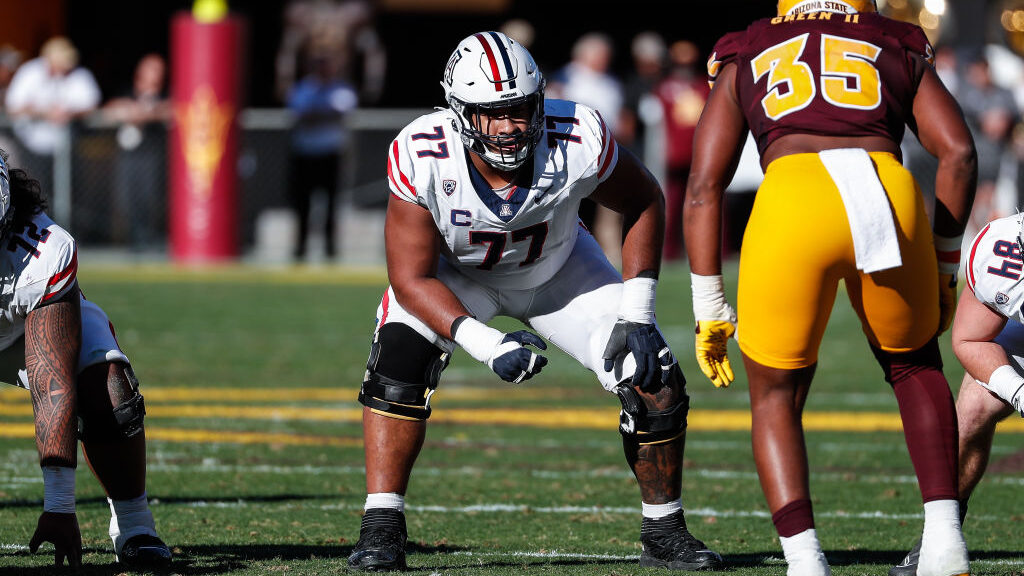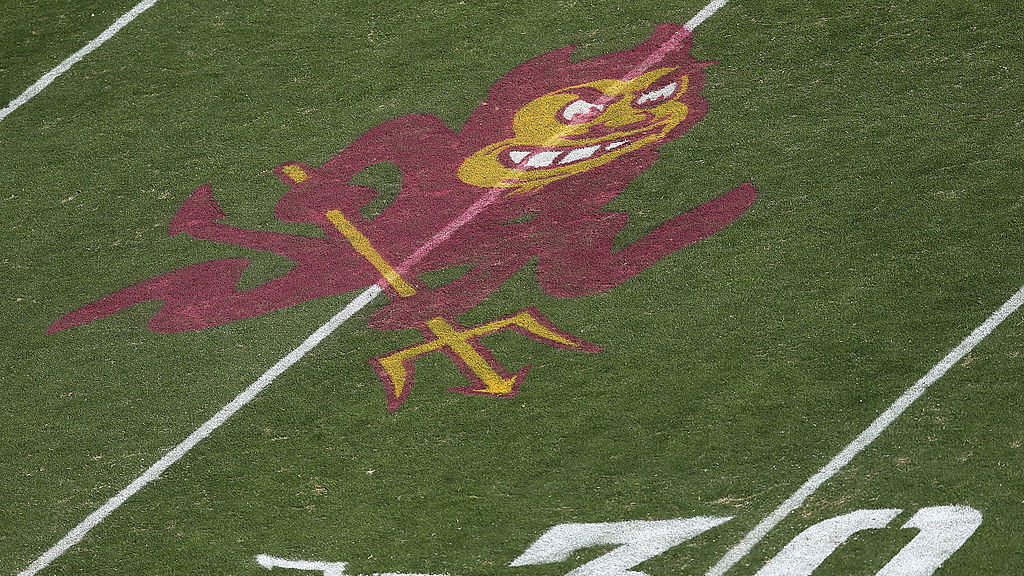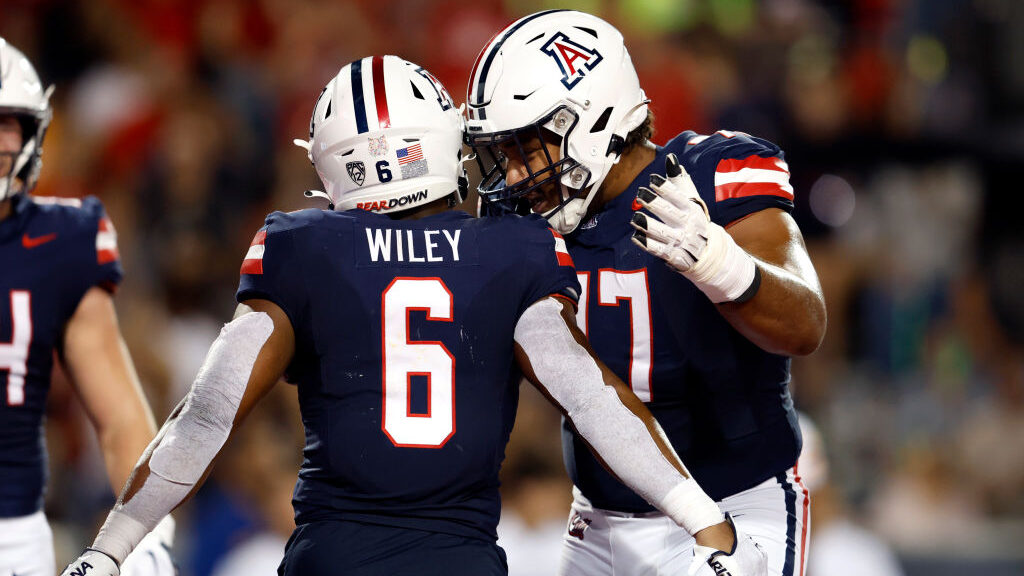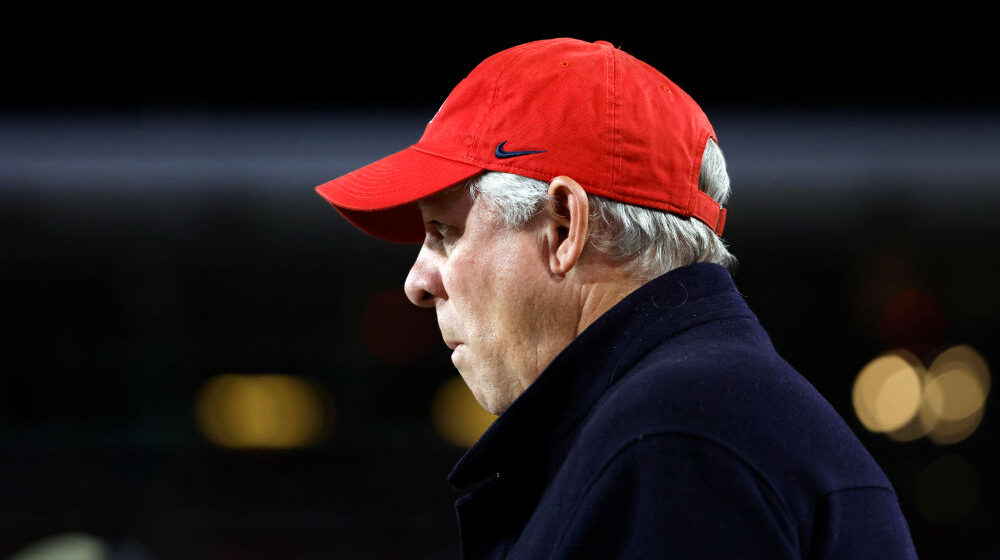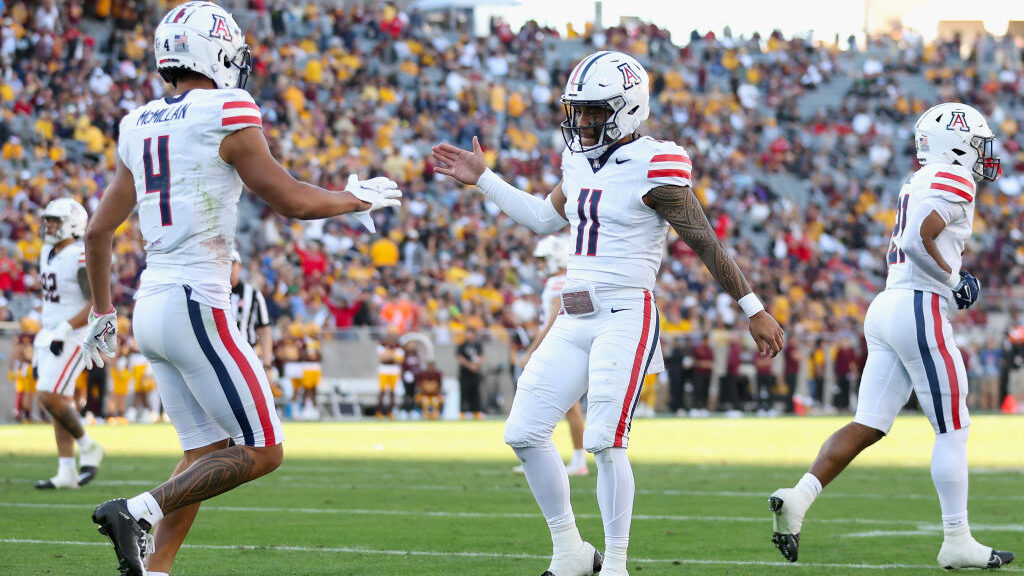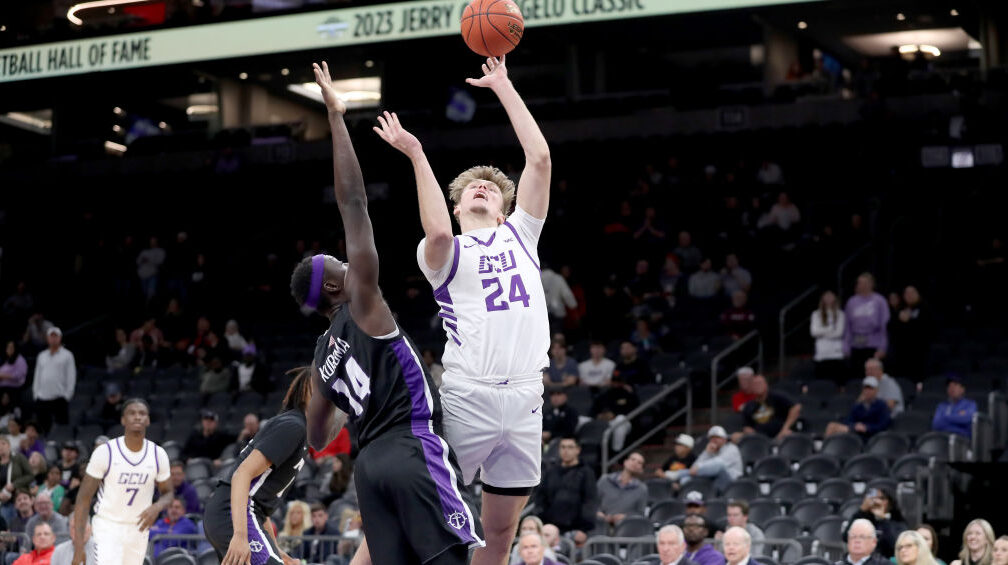How the Arizona Wildcats can eclipse their projected win total
Sep 2, 2022, 10:15 AM
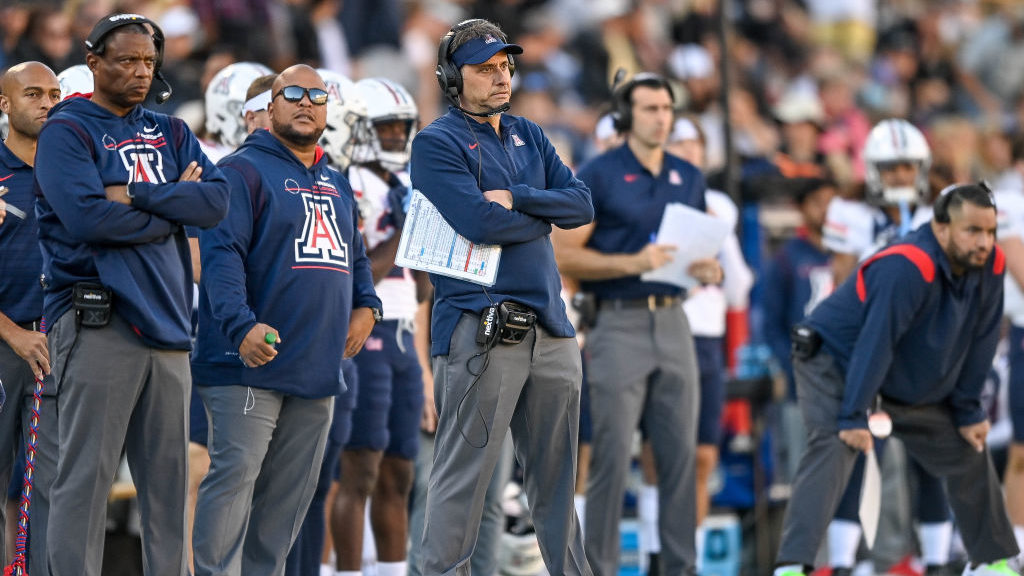
BOULDER, CO - OCTOBER 16: Head coach Jedd Fisch of the Arizona Wildcats looks on in the fourth quarter of a game against the Colorado Buffaloes at Folsom Field on October 16, 2021 in Boulder, Colorado. (Photo by Dustin Bradford/Getty Images)
(Photo by Dustin Bradford/Getty Images)
With a combined 1-16 record over the past two seasons, there’s nowhere to go but up for the Arizona Wildcats.
A significant reason for optimism is transfer quarterback Jayden de Laura, who comes to Tucson after an impressive 2021 with the Washington State Cougars.
In 12 games, de Laura completed 63.2% of passes for 2,798 yards, 23 touchdowns and nine interceptions. His passing efficiency rating of 144.8 ranked fourth in the Pac-12; third in the conference among quarterbacks with at least 300 pass attempts.
Even with the upgrade at quarterback, FanDuel Sportsbook sets the Wildcats win total at 3.5. On one hand, that mark feels very attainable. However, having not won multiple games in a season since 2019, it’s a fair over/under.
They also have the lowest odds to win the Pac-12 championship, at +50000. For reference, the Colorado Buffaloes have the second-lowest odds; they’re at +15000.
Arizona’s schedule is tough to predict, even their Week 1 matchup against a San Diego State team that went 12-2 a season ago. That said, there’s more that goes into winning than the quarterback.
What has to go right for them to hit the over on their 3.5-win over/under?
Rushing attack needs to improve
Drake Anderson and Michael Wiley are the veterans in that running back unit for the Wildcats.
Anderson enters his second season in Tucson after leading the Wildcats in rushing yards a year ago. In 87 attempts, he had 385 yards and a score on the ground. He also added 18 receptions for 95 yards as a receiver.
Wiley led the team in carries, with 91. However, he averaged just 3.3 yards per carry, but led the team with two rushing touchdowns. He added 297 yards on 33 receptions, giving him a team-leading 599 scrimmage yards for their running backs.
The junior enters his fourth year with the Wildcats; describing the theme of the season as one of “unfinished business.” Not just for the team, but for him.
As a receiving back, Wiley flourished. His 9.0 yards per reception ranked third on the team among players with at least 20 receptions. However, he had the lowest yards-per-carry in the running back room.
As a team, Arizona averaged 3.7 yards per carry, which was ninth in the Pac-12. They were last in the conference in rushing touchdowns as well, with just six — Colorado was 11th with 12.
No matter how good de Laura is, the Wildcats need to get more out of their backs to have a chance to win ballgames this fall. Wiley is listed on the Week 1 depth chart as a starter, with freshman Jonah Coleman and junior D.J. Williams behind him.
The offensive line starters include two redshirt seniors (left guard Josh Donovan and right tackle Paiton Fears), a junior (left tackle Jordan Morgan), a sophomore (center Josh Baker) and one freshman (right guard Jonah Savaiinaea). They are also going to have a say in improving the run game.
Find the end zone
Last season, the Wildcats were third in the Pac-12 in passing yards per game. However, they were dead-last in points per game and had a red zone scoring percentage of just 74.4% — 118th in FBS.
Having the most interceptions in the conference went a long way in hindering their ability to find the end zone. However, they scored just 19 touchdowns on offense and special teams to their 18 interceptions.
It wasn’t so much an issue of scoring in general, as they moved the ball enough to finish second in the conference in field goals made.
Having a quarterback of the caliber of de Laura also helps, but he’ll need support from his skill position players. Having big-play transfer Jacob Cowing, 6-foot-5 freshman Tetairoa McMillan and three potential options at tight end could give Arizona a few different ways to punch it in the end zone.
Be much more opportunistic on defense
Arizona may have allowed the second-fewest yards per game through the air in the conference, but they had the worst passer rating, most touchdowns allowed and fewest interceptions.
Against the run, only Stanford forced fewer fumbles.
Opponents weren’t scared of the Wildcats’ defense, and it reflected in the third-worst scoring defense in the Pac-12.
Arizona only forced four turnovers through the air — each by a different player. Couple that with being middle-of-the-pack in sacks, and you get a defense that struggles to keep points off the board.
Be tougher in the trenches
Fisch appointed Johnny Nansen as his new defensive coordinator in December. Nansen replaces Don Brown, who left to become head coach at UMass.
Arizona’s new defensive coordinator spent the past two seasons coaching UCLA’s defensive line, where they became one of the best run-stuffing units in the country.
Last season, the Wildcats ranked 10th in the Pac-12 in rushing yards allowed per game, tied for seventh in yards per attempt and 11th in fumbles. Having a defensive coach with a reputation for stopping the run can go a long way in establishing an identity for a team that struggled to stop anything a season ago.



